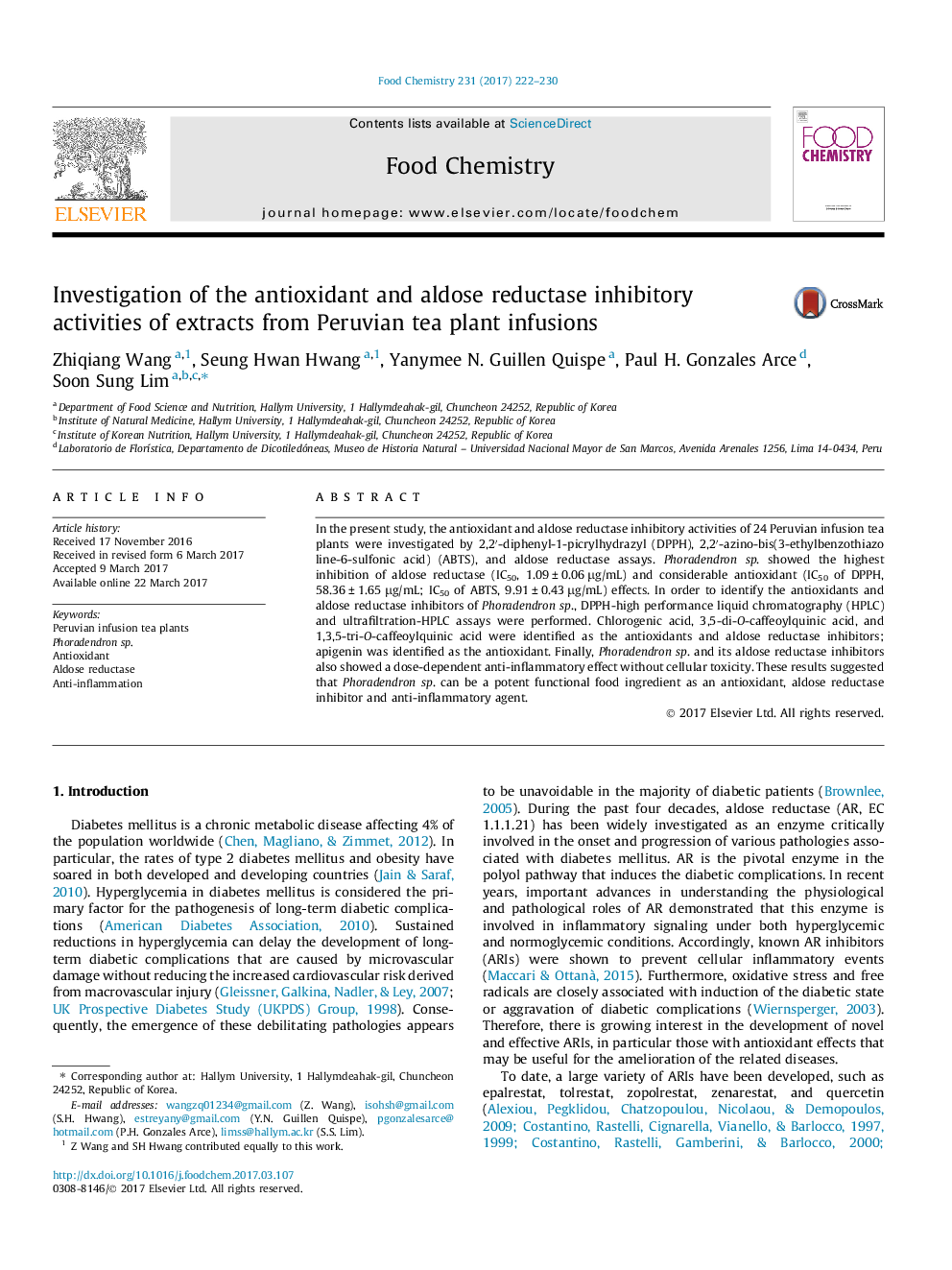| Article ID | Journal | Published Year | Pages | File Type |
|---|---|---|---|---|
| 5132887 | Food Chemistry | 2017 | 9 Pages |
â¢Antioxidant effects of 24 Peruvian infusion tea plants were investigated.â¢Aldose reductase inhibitory effects of the 24 plants were also investigated.â¢Aldose reductase ultrafiltration-high pressure liquid chromatography was developed.â¢Phoradendron sp. is a potent functional food ingredient.
In the present study, the antioxidant and aldose reductase inhibitory activities of 24 Peruvian infusion tea plants were investigated by 2,2â²-diphenyl-1-picrylhydrazyl (DPPH), 2,2â²-azino-bis(3-ethylbenzothiazoline-6-sulfonic acid) (ABTS), and aldose reductase assays. Phoradendron sp. showed the highest inhibition of aldose reductase (IC50, 1.09 ± 0.06 μg/mL) and considerable antioxidant (IC50 of DPPH, 58.36 ± 1.65 μg/mL; IC50 of ABTS, 9.91 ± 0.43 μg/mL) effects. In order to identify the antioxidants and aldose reductase inhibitors of Phoradendron sp., DPPH-high performance liquid chromatography (HPLC) and ultrafiltration-HPLC assays were performed. Chlorogenic acid, 3,5-di-O-caffeoylquinic acid, and 1,3,5-tri-O-caffeoylquinic acid were identified as the antioxidants and aldose reductase inhibitors; apigenin was identified as the antioxidant. Finally, Phoradendron sp. and its aldose reductase inhibitors also showed a dose-dependent anti-inflammatory effect without cellular toxicity. These results suggested that Phoradendron sp. can be a potent functional food ingredient as an antioxidant, aldose reductase inhibitor and anti-inflammatory agent.
